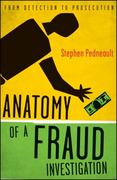Answered step by step
Verified Expert Solution
Question
1 Approved Answer
There are n logging firms who can cut trees from the local old-growth forest. The number of trees each firm i cuts is denoted by
There are n logging firms who can cut trees from the local old-growth forest. The number of trees each firm i cuts is denoted by xi , where xi can take any value between 0 and a maximum per firm of 100. Each tree costs c to cut (fixed and equal for all firms) and, if brought to the market, is worth p to the firm, with p > c. Monitoring is feasible and the xi 's are observable. Enforcing fines is also feasible, but costly: each fine costs the government more than the revenue of the fine. For simplicity, suppose that the government loses a net value d per logging firm fined, regardless of the level of the fine (more expensive fines are also more expensive to collect). The government's budget B is large (B > dn); thus it is feasible and credible for the government to fine all firms, but it is also expensive. The firms decide simultaneously how many trees to cut. The newly elected mayor is concerned about the environmental damage but wants to minimize the expenditure in enforcement. She establishes a new rule: (1) The firm which cuts the most trees will have them all
Step by Step Solution
There are 3 Steps involved in it
Step: 1

Get Instant Access to Expert-Tailored Solutions
See step-by-step solutions with expert insights and AI powered tools for academic success
Step: 2

Step: 3

Ace Your Homework with AI
Get the answers you need in no time with our AI-driven, step-by-step assistance
Get Started


